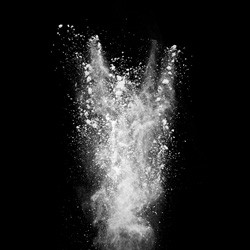Supersonic speeds for maximum impact
Coatings are widely used to enhance the properties of substrate materials. For example, machine parts are coated to reduce abrasion and wear, and medical devices are coated to enhance durability and ensure biocompatibility. The market is huge and competitive. European scientists initiated the EU-funded 'Supersonic deposition of nanostructured surfaces' (SUPERSONIC)(opens in new window) project to develop nano-structured coatings from multifunctional reactive nanopowders. The basic principle is that the residual energy of incomplete chemical reactions within the nanopowders can be harnessed during supersonic deposition. The cold spray or supersonic deposition process propels particles in a heated gas stream toward a substrate via a supersonic nozzle. The high impact velocity releases the stored energy, sort of like solid fuel, reducing external energy required and enhancing the bonding of particles onto the substrate. Cold spray is an emerging process already yielding promising results. SUPERSONIC removed important technical barriers to widespread implementation and creation of a new European manufacturing platform for high-performance products. Mechanochemical reactions in high-energy ball milling were exploited to manufacture nanopowders. Coatings were applied with the cold spray or cold gas dynamic spray technology. Scientists chose three industrial applications consisting of aeronautical load bearings, mechanical components for automotive engines and biomedical coatings for orthopaedic implants. The SUPERSONIC team successfully developed reactive nanopowders suitable for supersonic deposition with the cold gas dynamic spray technique, as well as advanced and reliable equipment for spray deposition. The high-energy ball milling process and the spray process for both minimally and highly reactive deposition were successfully integrated into the manufacturing chain. They were used to produce hard and dense coatings with improved properties compared to those made using benchmark materials and processes. Supersonic sprayed coatings exhibit good tribological characteristics under dry and wet conditions and are of great interest to industry. SUPERSONIC results clearly demonstrating the feasibility and cost effectiveness of the technology open the door to market exploitation. Presentation of results through over 20 journal articles and participation in nearly 30 public events should ensure heightened awareness of the potential.



